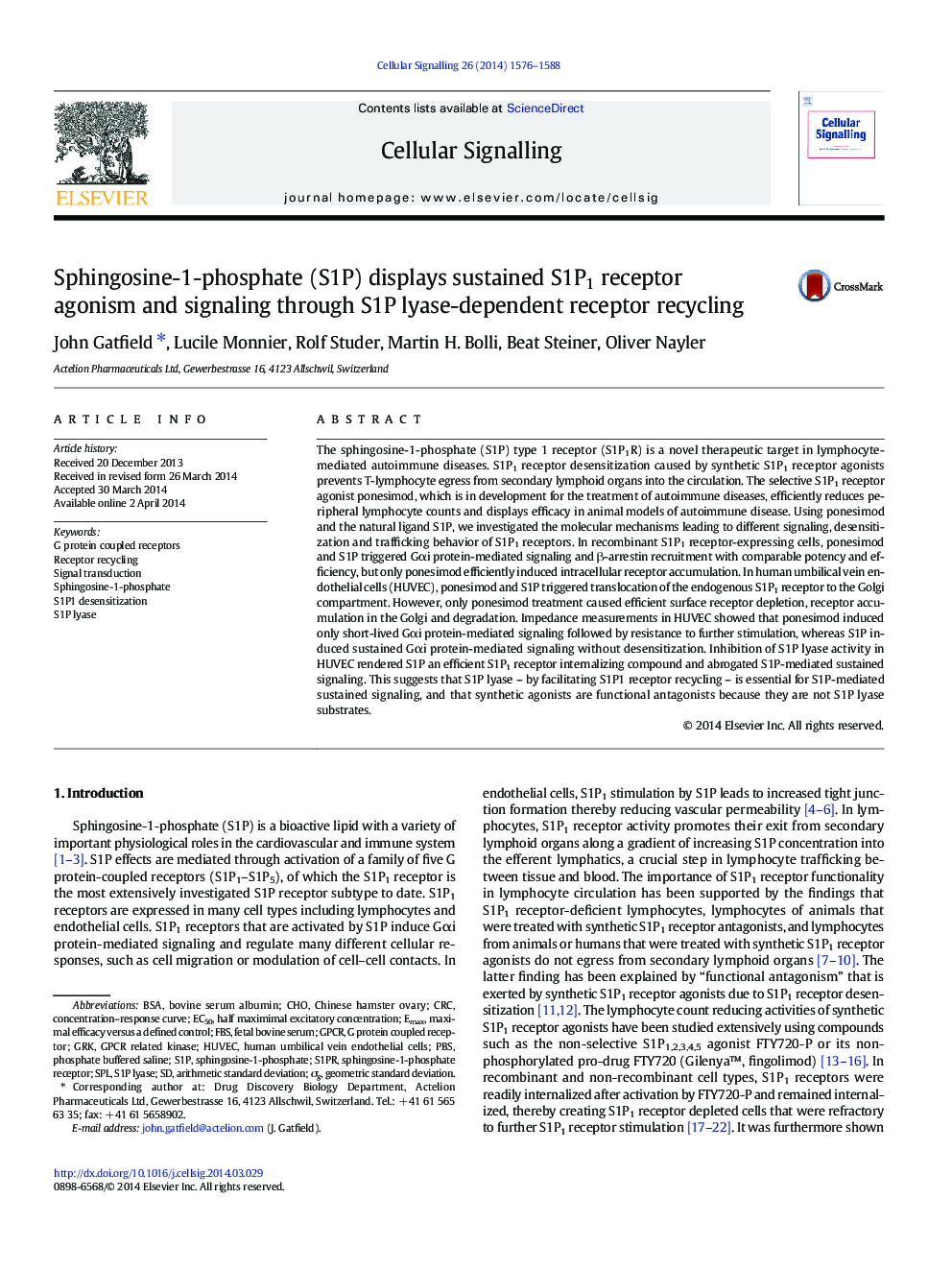| کد مقاله | کد نشریه | سال انتشار | مقاله انگلیسی | نسخه تمام متن |
|---|---|---|---|---|
| 10816077 | 1058539 | 2014 | 13 صفحه PDF | دانلود رایگان |
عنوان انگلیسی مقاله ISI
Sphingosine-1-phosphate (S1P) displays sustained S1P1 receptor agonism and signaling through S1P lyase-dependent receptor recycling
دانلود مقاله + سفارش ترجمه
دانلود مقاله ISI انگلیسی
رایگان برای ایرانیان
کلمات کلیدی
موضوعات مرتبط
علوم زیستی و بیوفناوری
بیوشیمی، ژنتیک و زیست شناسی مولکولی
زیست شیمی
پیش نمایش صفحه اول مقاله

چکیده انگلیسی
The sphingosine-1-phosphate (S1P) type 1 receptor (S1P1R) is a novel therapeutic target in lymphocyte-mediated autoimmune diseases. S1P1 receptor desensitization caused by synthetic S1P1 receptor agonists prevents T-lymphocyte egress from secondary lymphoid organs into the circulation. The selective S1P1 receptor agonist ponesimod, which is in development for the treatment of autoimmune diseases, efficiently reduces peripheral lymphocyte counts and displays efficacy in animal models of autoimmune disease. Using ponesimod and the natural ligand S1P, we investigated the molecular mechanisms leading to different signaling, desensitization and trafficking behavior of S1P1 receptors. In recombinant S1P1 receptor-expressing cells, ponesimod and S1P triggered Gαi protein-mediated signaling and β-arrestin recruitment with comparable potency and efficiency, but only ponesimod efficiently induced intracellular receptor accumulation. In human umbilical vein endothelial cells (HUVEC), ponesimod and S1P triggered translocation of the endogenous S1P1 receptor to the Golgi compartment. However, only ponesimod treatment caused efficient surface receptor depletion, receptor accumulation in the Golgi and degradation. Impedance measurements in HUVEC showed that ponesimod induced only short-lived Gαi protein-mediated signaling followed by resistance to further stimulation, whereas S1P induced sustained Gαi protein-mediated signaling without desensitization. Inhibition of S1P lyase activity in HUVEC rendered S1P an efficient S1P1 receptor internalizing compound and abrogated S1P-mediated sustained signaling. This suggests that S1P lyase - by facilitating S1P1 receptor recycling - is essential for S1P-mediated sustained signaling, and that synthetic agonists are functional antagonists because they are not S1P lyase substrates.
ناشر
Database: Elsevier - ScienceDirect (ساینس دایرکت)
Journal: Cellular Signalling - Volume 26, Issue 7, July 2014, Pages 1576-1588
Journal: Cellular Signalling - Volume 26, Issue 7, July 2014, Pages 1576-1588
نویسندگان
John Gatfield, Lucile Monnier, Rolf Studer, Martin H. Bolli, Beat Steiner, Oliver Nayler,